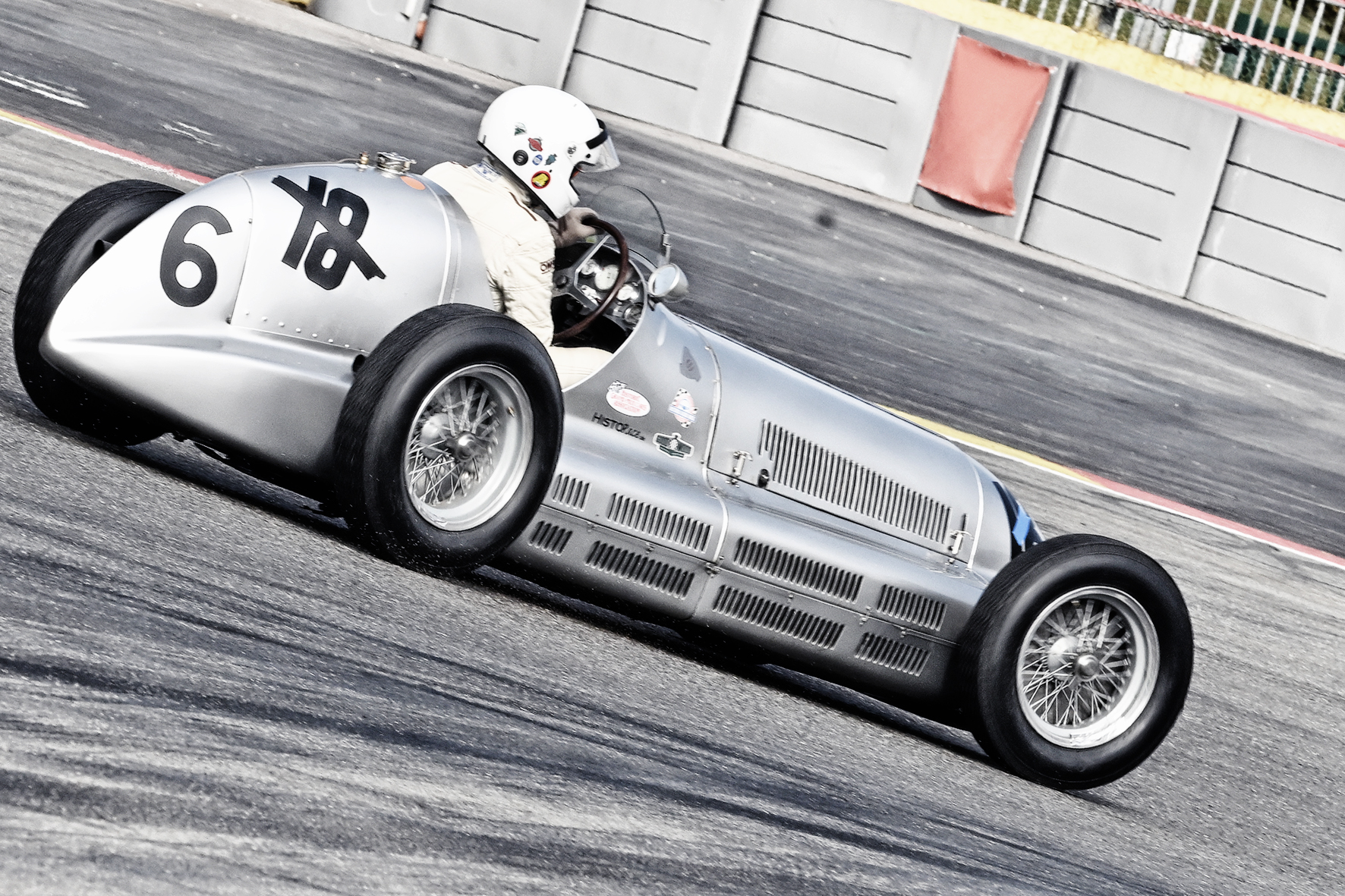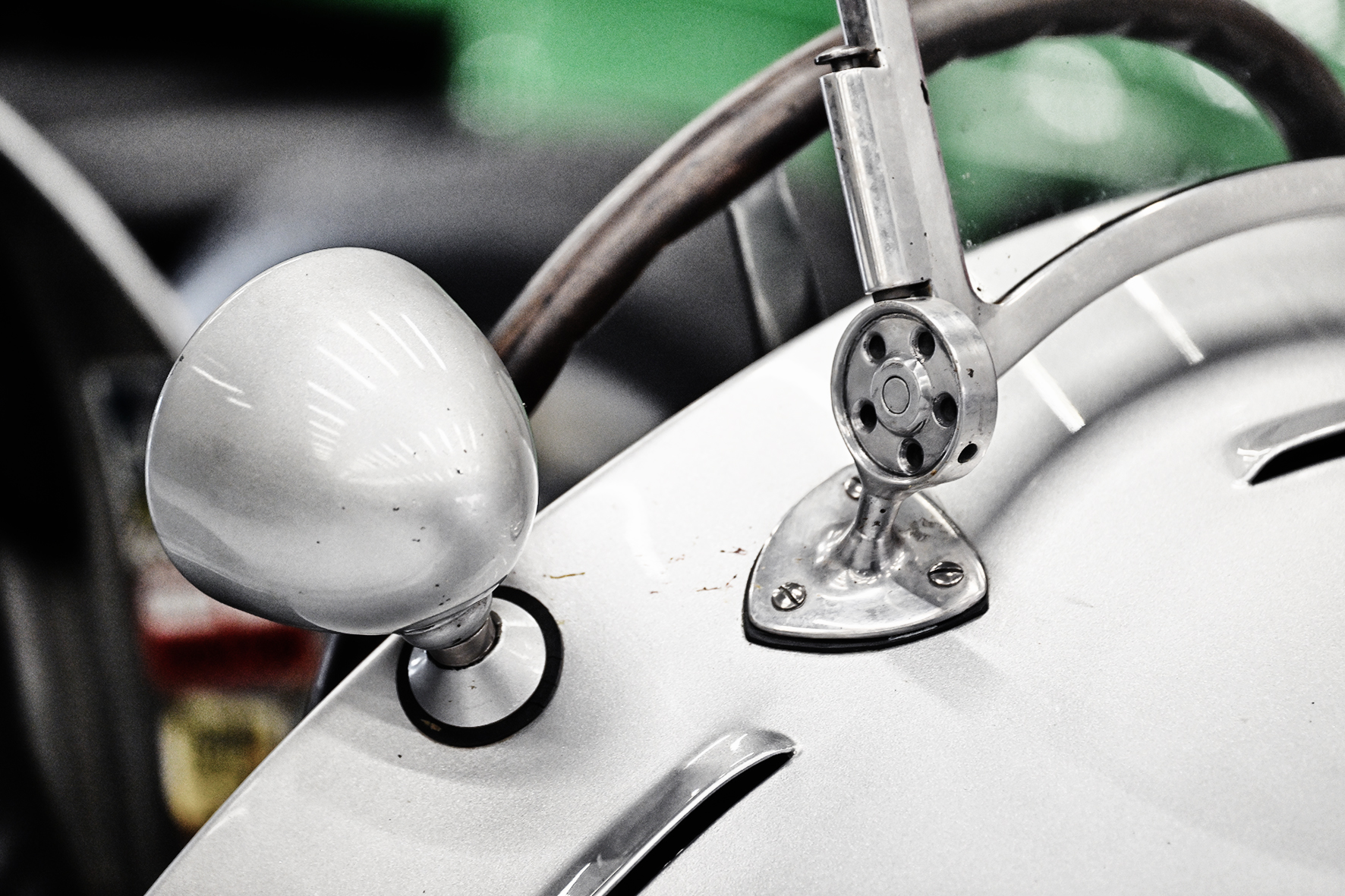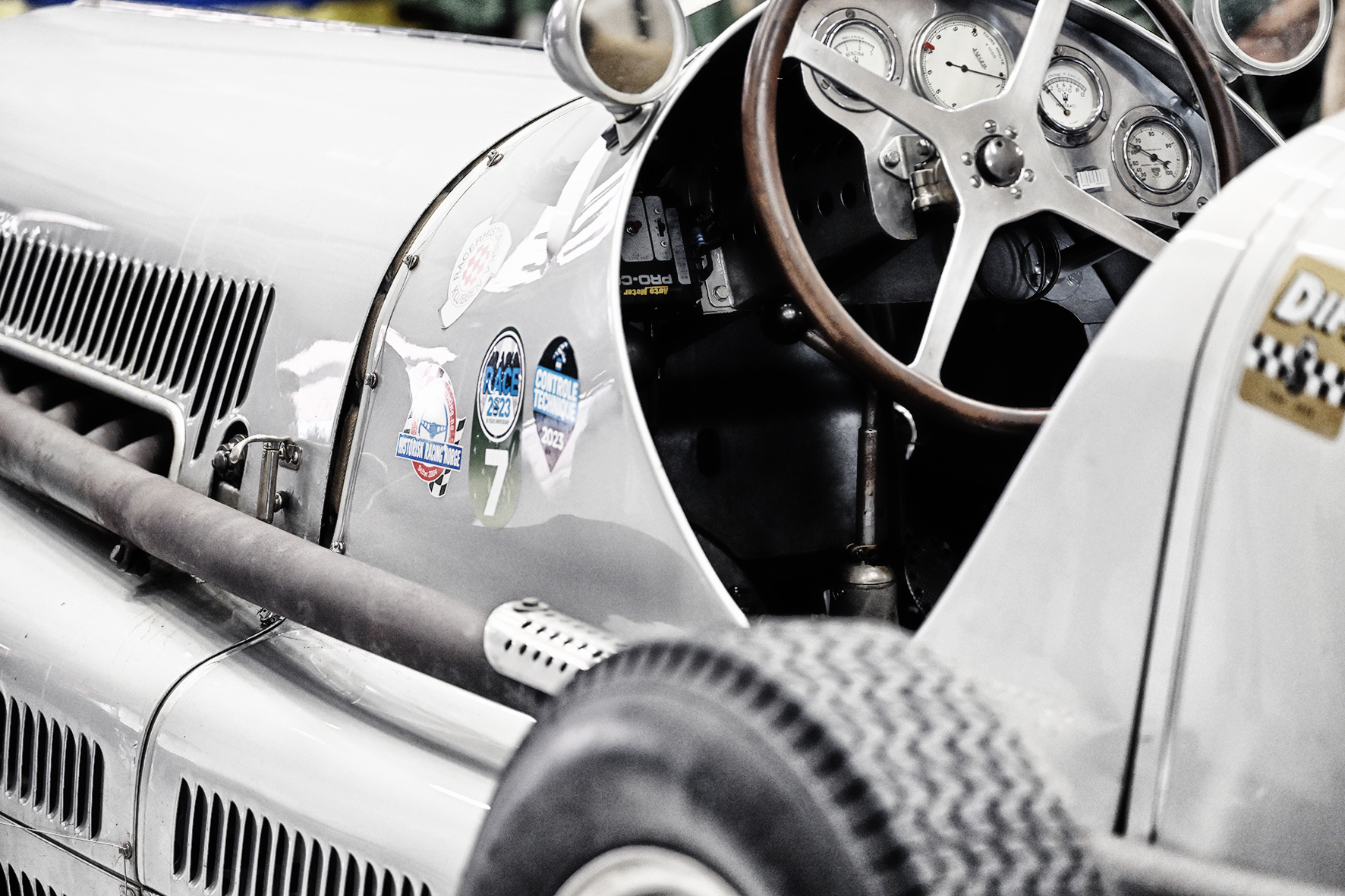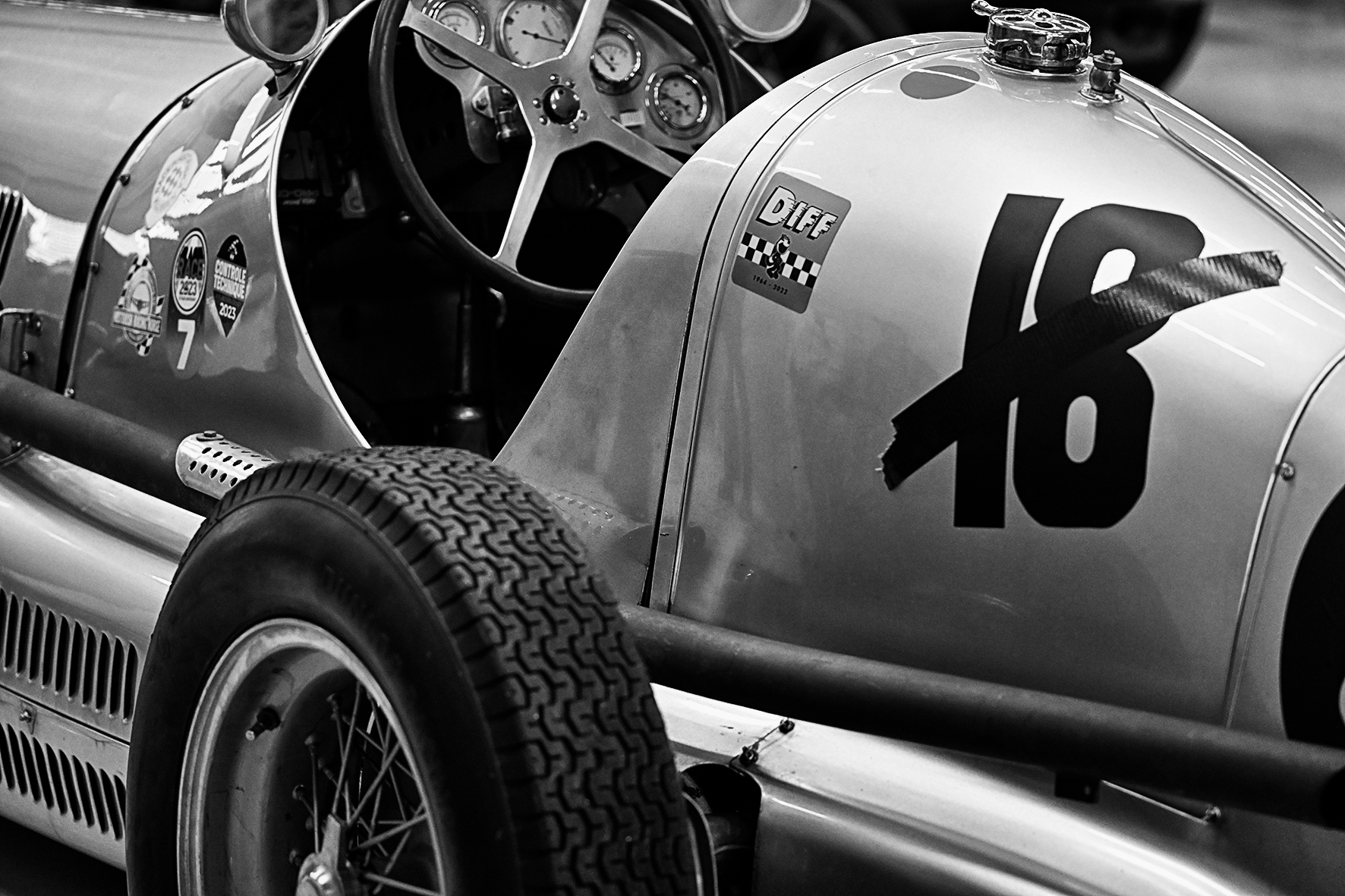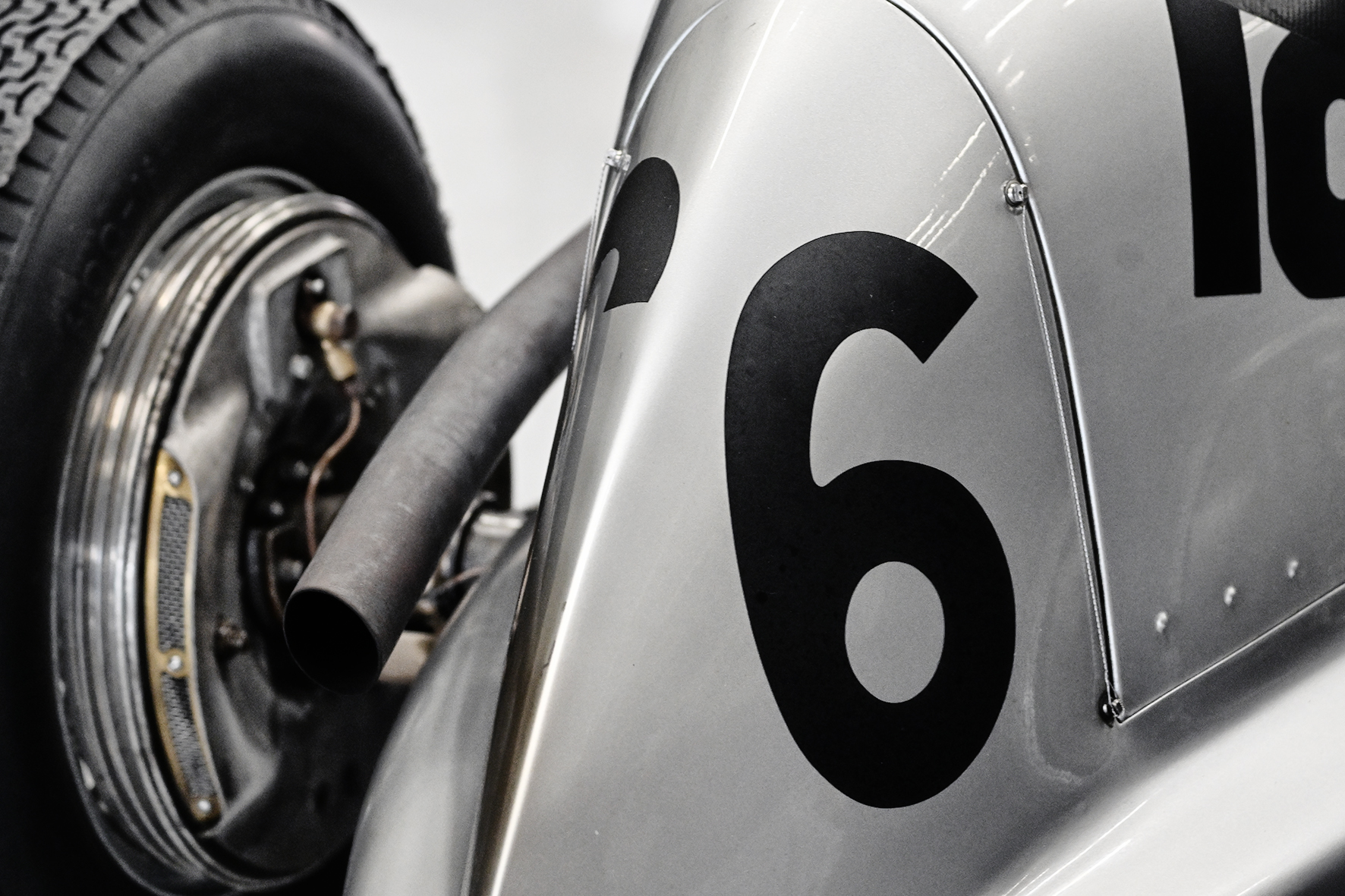During the Spa Six Hours Motor Racing Event in September, a Maserati 6CM was driven by the German racing driver Markus Neisius in the Historic Grand Prix Car Association race. This Maserati was painted in silver, a rather untypical colour for an Italian racing car, which were always red in their time.
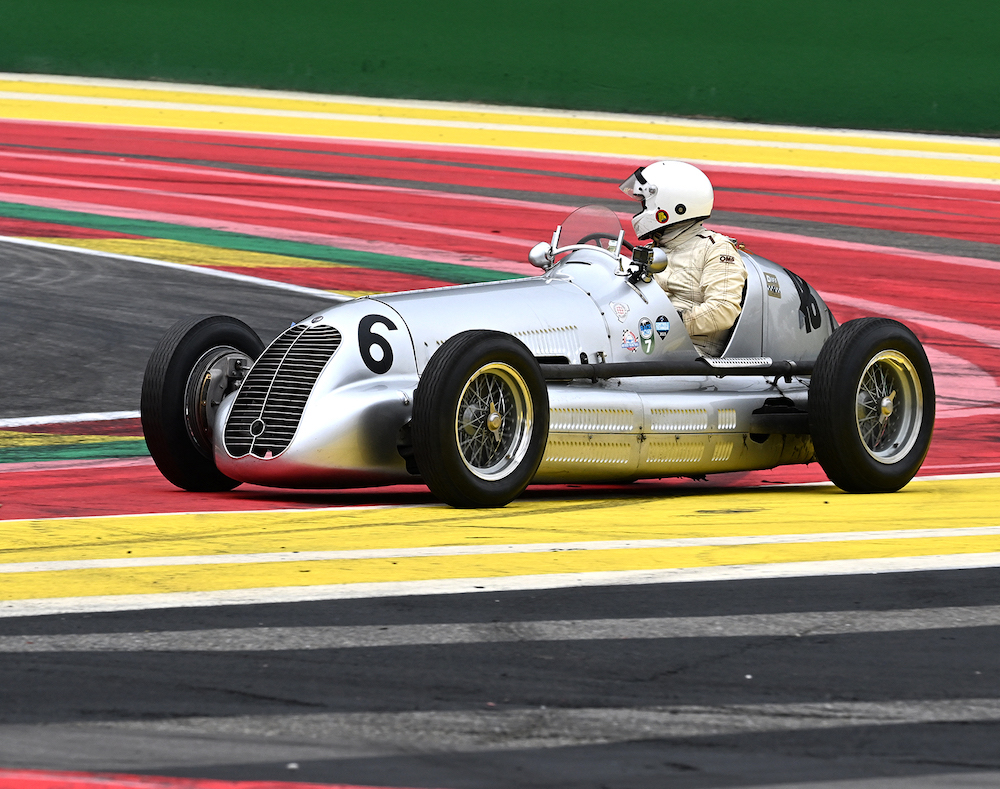
This colour scheme gave the Maserati a somewhat raw, pristine and almost unfinished look but also an extremely photogenic look. I have actually had a Maserati 6CM in front of my camera several times, but this one with chassis number #1561 from 1937 was something very special.
The model designation 6CM stands for 6-cylinder monoposto. It was the successor of the 4CM and was built in 27 units from 1936 – 1939. When in the 1930s the Grand Prix races were dominated by the German racing cars of Mercedes Benz and Auto Union, the Maserati brothers decided to compete in the smaller Voiturette-1l class. Alfa Romeo and the English Racing Automobiles (ERA) also went this way.
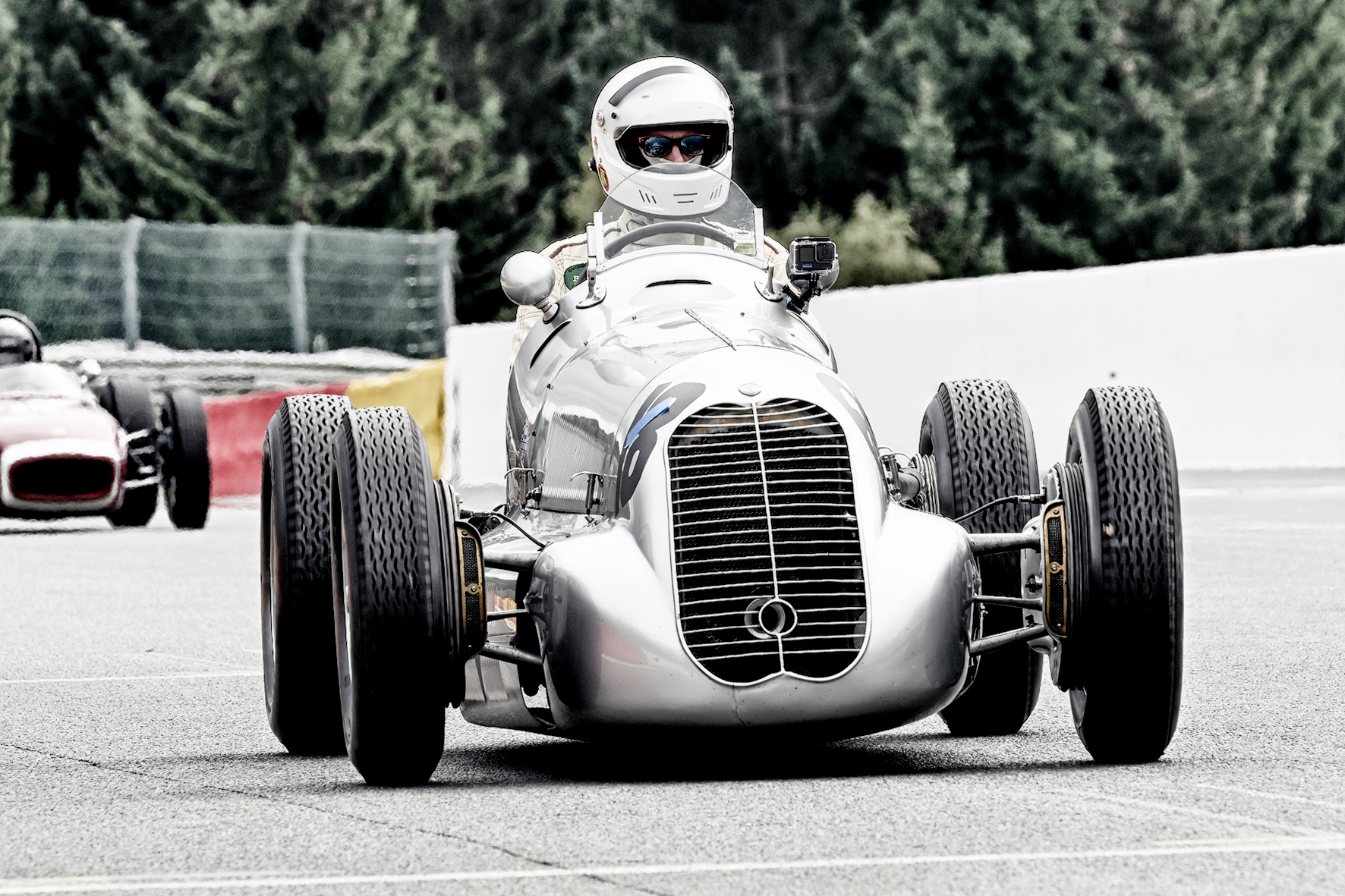
At the beginning, Maserati started with the 4CM, which quickly proved to be uncompetitive against the new Alfa Romeo’s and ERA’s, and when finally 1.5l engines with compressor were allowed for the Voiturette class, Maserati developed the 6CM, which was extremely successful and almost unbeatable, especially in the 1938 season, thanks to its technical refinements. The in-line six-cylinder engine with supercharger had a peak output of 175 hp, the racing car weighed only 650 kg, which allowed it to achieve unbelievable performance. In the hands of the then very famous Italian racing driver Carlo Felice “Didi” Trossi, the Maserati 6CM was the racing car to beat. He drove chassis number #1532 and won four of the five races in which he competed. In the fifth race he finished second. The most important victory was of course in Monaco. Chassis number #1531 was very successful and competitive with American Harry Schell in important races at Monaco and Goodwood among others.

The Maserati 6CM was a remarkable racing car that confirmed the Maserati brothers in their tenacity and finally, by 1938 at the latest, was clearly superior to the ERA’s. The development of the 6CM was due to the failed experiment with the Tipo V8 RI. While the independent suspension with torsion bars was used at the front, the traditional construction with a rigid axle and leaf springs was trusted at the rear.
The in-line six-cylinder, on the other hand, was a completely new development. It was a typical Maserati design with a cast-iron cylinder head forming a unit with the cylinders cast in pairs. The cylinder block was constructed as a monobloc of electric cast iron. The stroke was relatively short, allowing extremely high revs of up to 6500 rpm. The two overhead camshafts were driven by a gear set as usual. The Roots supercharger was fed by a Weber 55ASA1 carburettor.
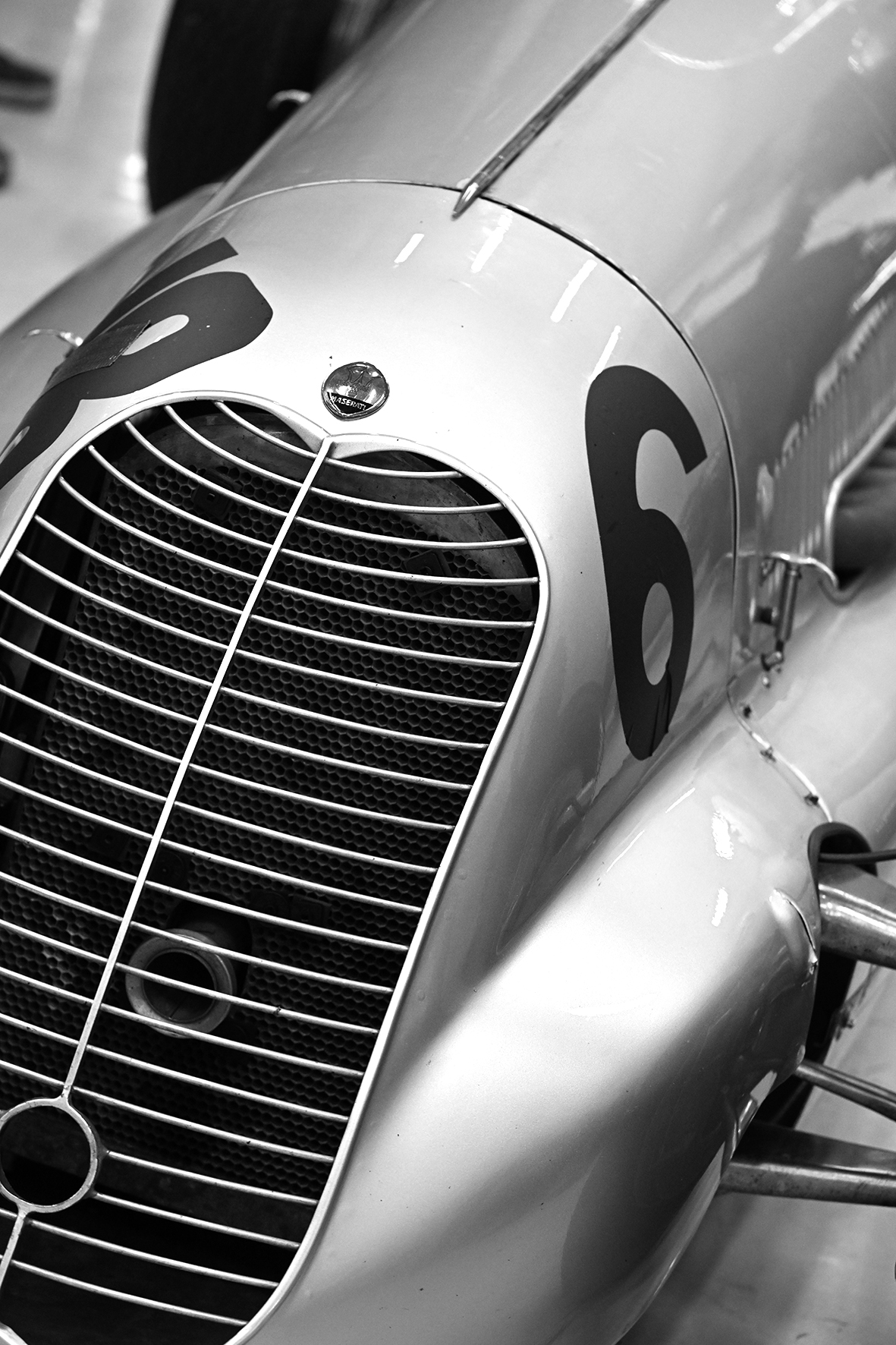
Later, a constructive lowering of the centre of gravity achieved a significantly better road holding and balance of the Monoposto. Then the sides of the racing car received a fairing at the height of the sill, which was good for the driving stability.
The appearance of this special Maserati 6CM at the Spa Six Hours really thrilled me. Even though Markus Neisius was the only competitor in his class and thus had the class victory assured, he drove very fast, as fast as it was possible.
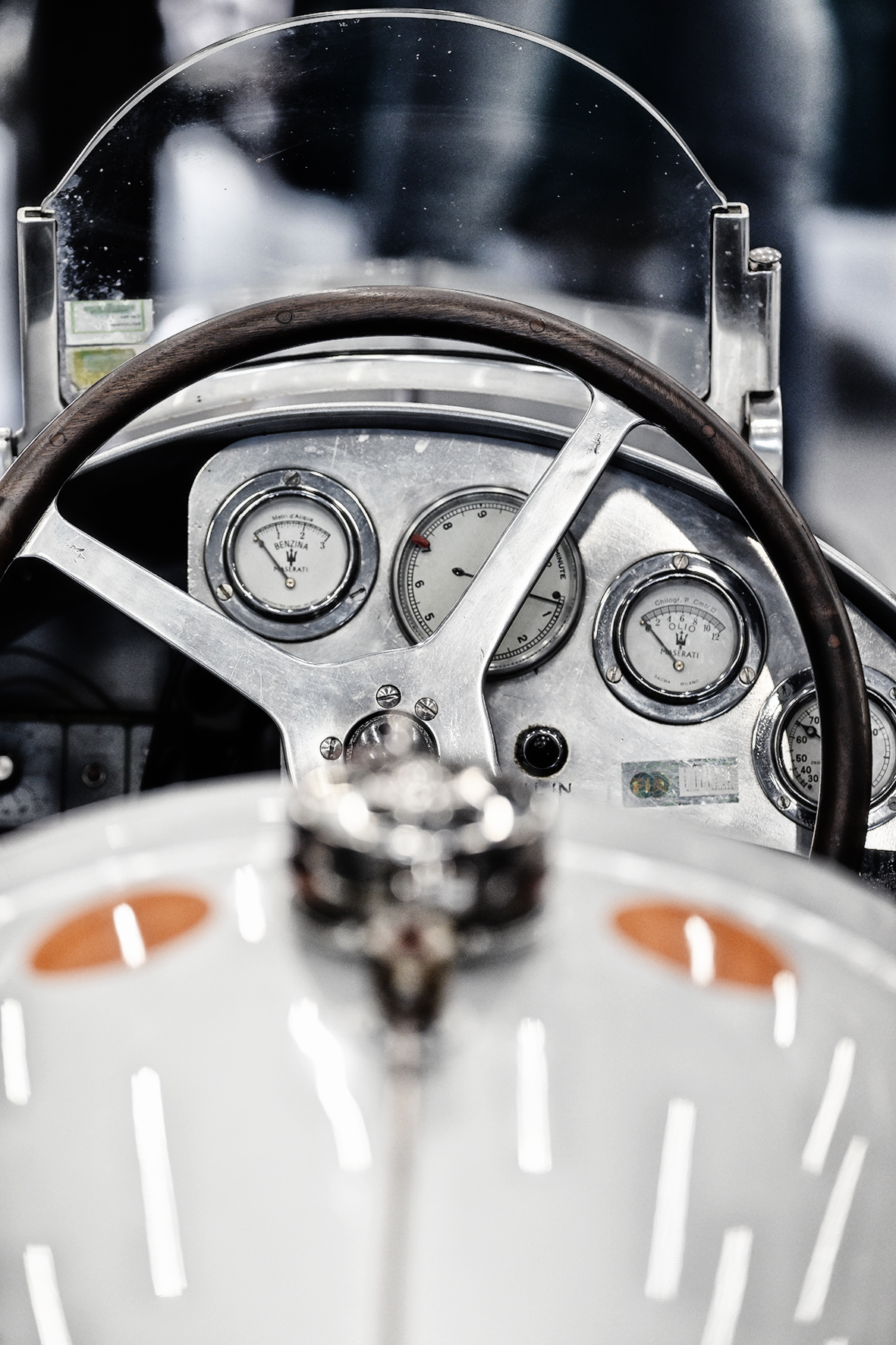
The body of the 6CM is cut extremely deep in the area of the driver’s seat so that the driver could be seen up to his thighs. The monoposto did not offer much lateral support, so the driver always had to lean out of the car towards the apex of the bend and hold on to the steering wheel. This required a lot of courage, especially since the Maserati did not have seat belts. On a fast circuit like Spa Francorchamps, it is certainly a real adventure to race this wonderful 6CM.
Like almost all Maserati monoposto racing cars of this period, the design and lines are almost perfect and balanced in proportions. Visually and acoustically, the appearance of this Maserati was a real highlight of the weekend. Find out more about our photographer Ralph Lüker.

